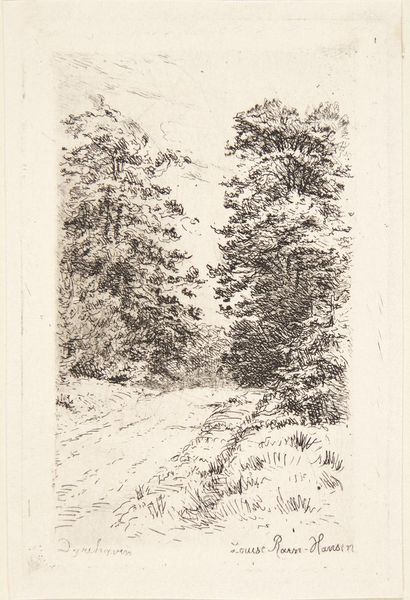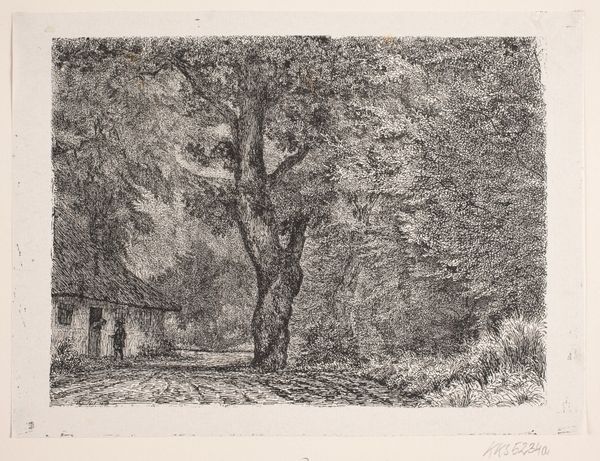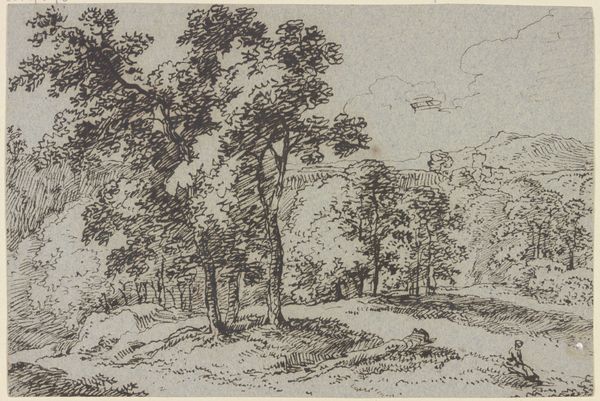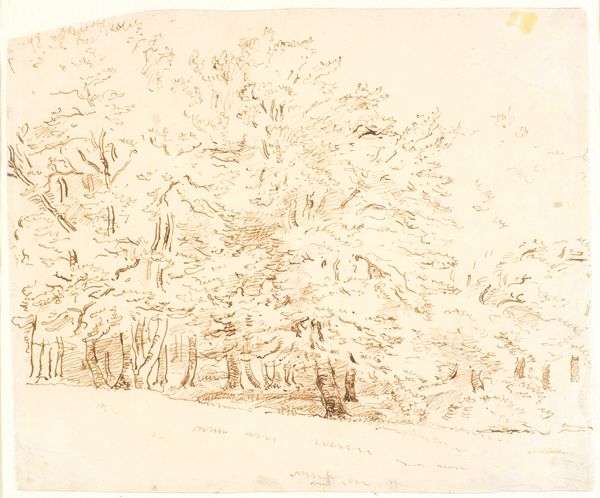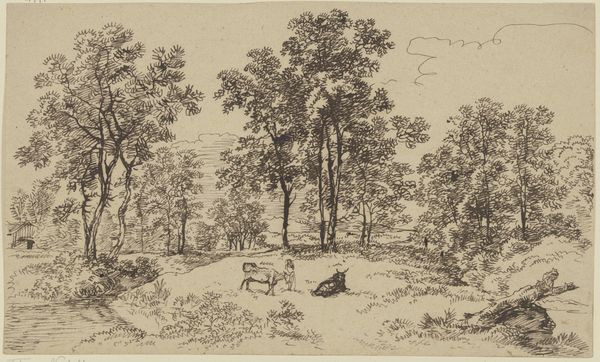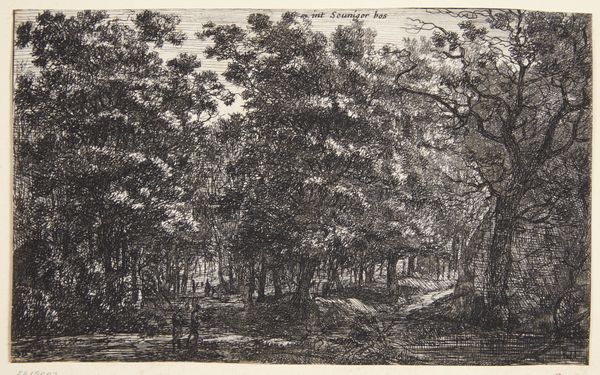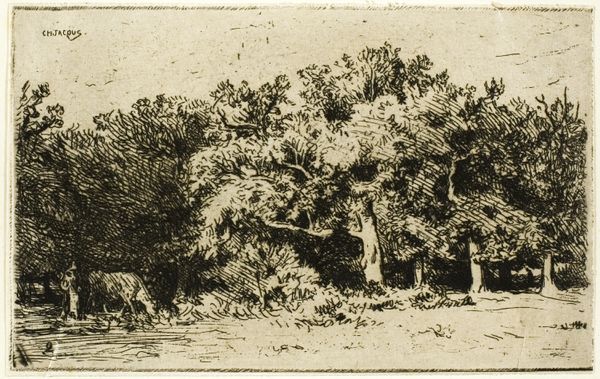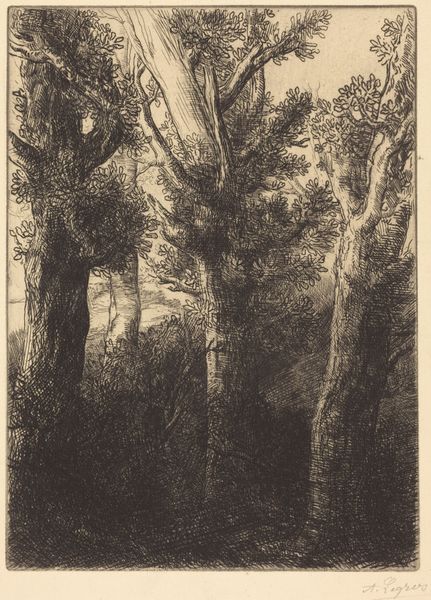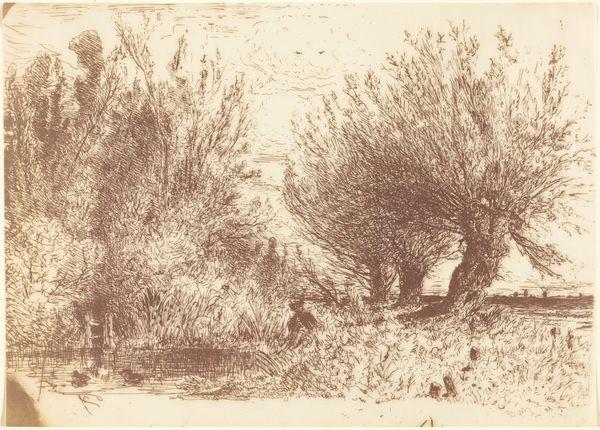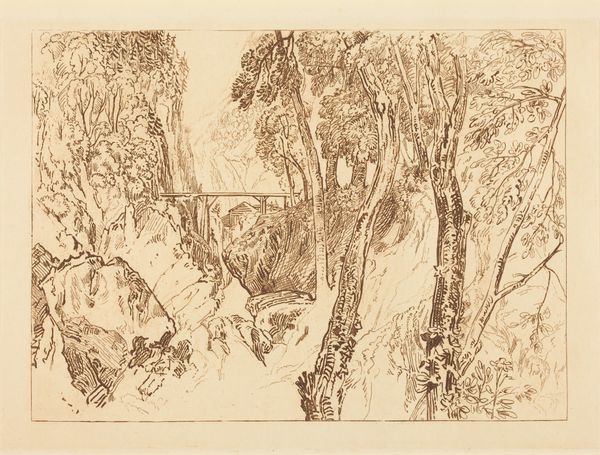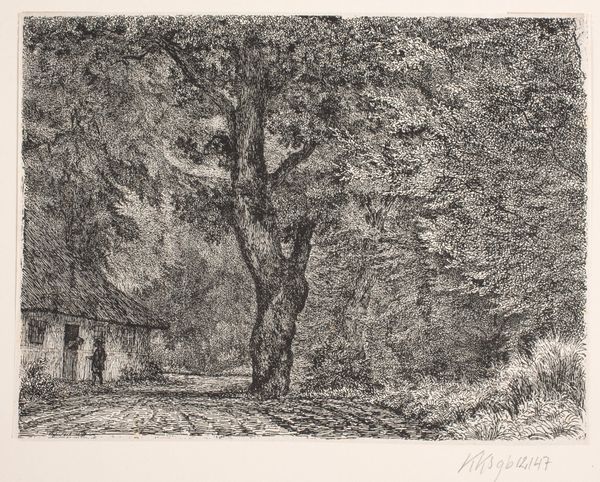
drawing, print, etching
#
drawing
# print
#
etching
#
landscape
#
line
#
northern-renaissance
Dimensions: Sheet: 8 7/8 × 13 7/8 in. (22.5 × 35.3 cm) Plate: 6 3/4 × 9 15/16 in. (17.2 × 25.3 cm)
Copyright: Public Domain
Félix Bracquemond created this print of Rue des Bruyères in Sèvres, France, using etching. Here, the artist has captured the light as it falls on a simple country road, and he’s done so with great technical sophistication. What is the public role of such an image? The late 19th century was a time of rapid industrialization and urbanization, and one way artists responded was with scenes of rural life that are offered as a kind of refuge. Sèvres itself was the location of a royal porcelain factory that, by the 19th century, was mass-producing luxury goods for the bourgeoisie. In this context, Bracquemond’s landscape can be understood as a subtle critique of institutional values, and a celebration of an alternative vision of French culture. To fully understand a work like this, the art historian draws on a range of resources to place the art in its full social and institutional context.
Comments
No comments
Be the first to comment and join the conversation on the ultimate creative platform.
